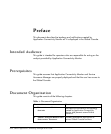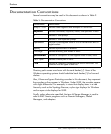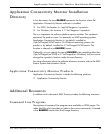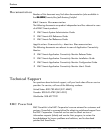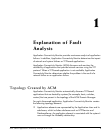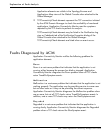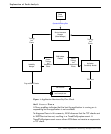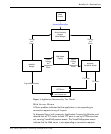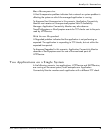
Explanation of Fault Analysis
2 EMC Smarts Application Connectivity Manager User’s Guide
Application elements are visible in the Topology Browser and
Applications Map views of the Global Console when attached to the
Global Manager.
• TCPConnectivityCheck elements represent the TCP connection initiated
by the ACM Domain Manager to check the availability of monitored
applications. Application Connectivity Monitor uses the symptoms
reported by the TCP checks to perform its analysis.
TCPConnectivityCheck elements may be listed in the Notification Log
view or Codebook tab of the Notification Properties dialog of the
Global Console when attached to the Global Manager.
TCPConnectivityCheck elements are listed when an event occurs.
Faults Diagnosed by ACM
Application Connectivity Monitor notifies the following problems for
application elements.
Down
Down is a root-cause problem that indicates that the application is not
running; either because the process has died or stopped. Application
Connectivity Monitor diagnoses the Down problem when all TCP checks
return TimedOutSymptom events.
Malfunction
Malfunction is a root-cause problem that indicates that the application is not
working properly. The application may be providing service to some users
but not other users or it may not be providing the correct response.
Application Connectivity Monitor diagnoses the Malfunction problem when
one or more, but not all, TCP checks return TimedOutSymptoms events. In
addition, one or more TCP checks may return the SlowSymptom event.
Degraded
Degraded is a root-cause problem that indicates that the application is
running slowly. Application Connectivity Monitor diagnoses the Degraded
problem when a TCP check returns the SlowSymptom event.




